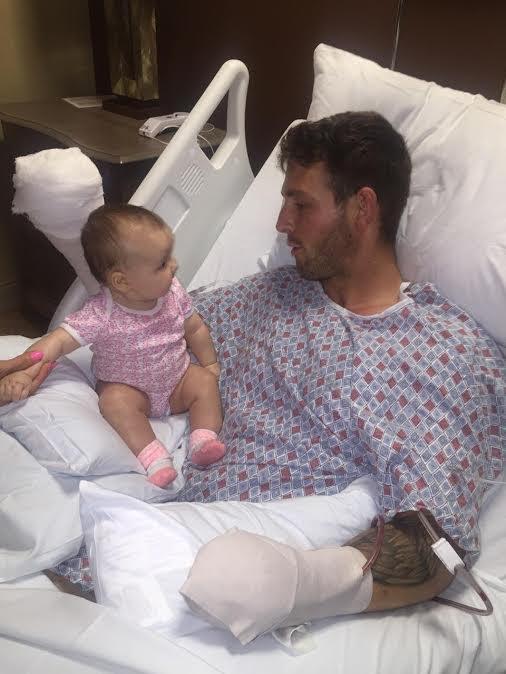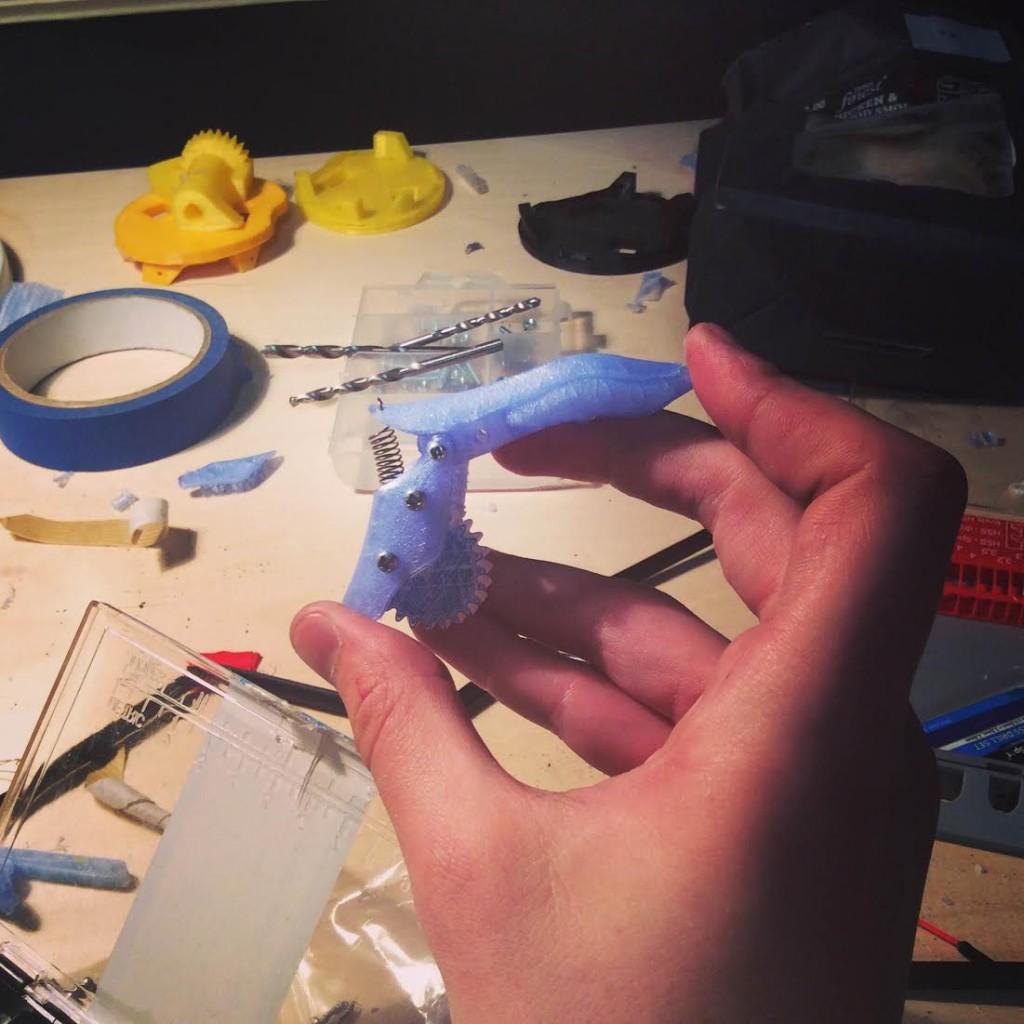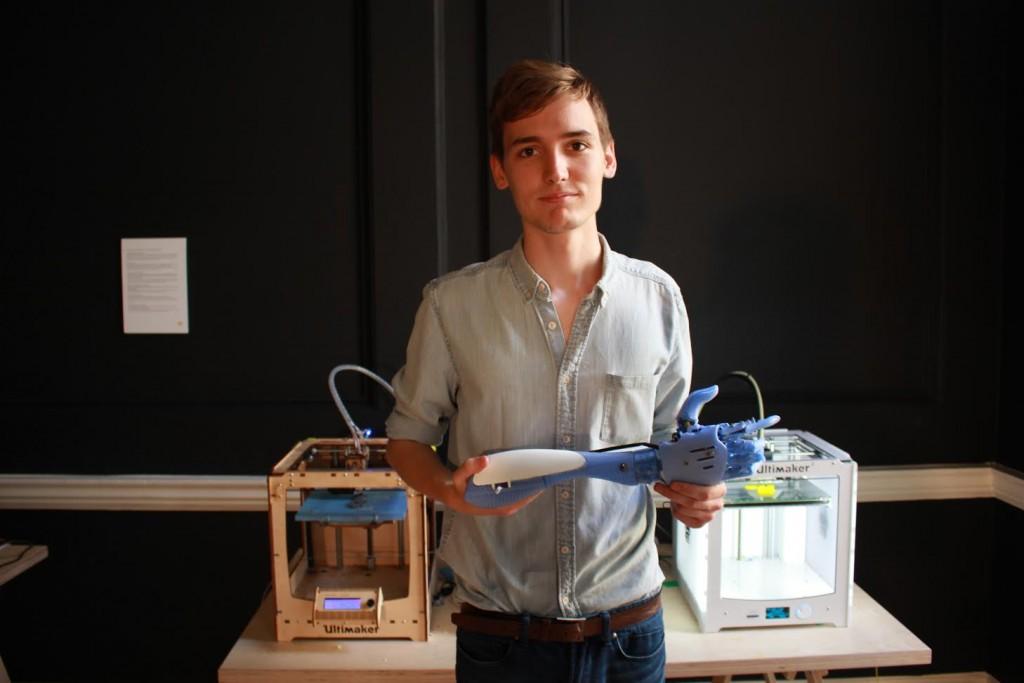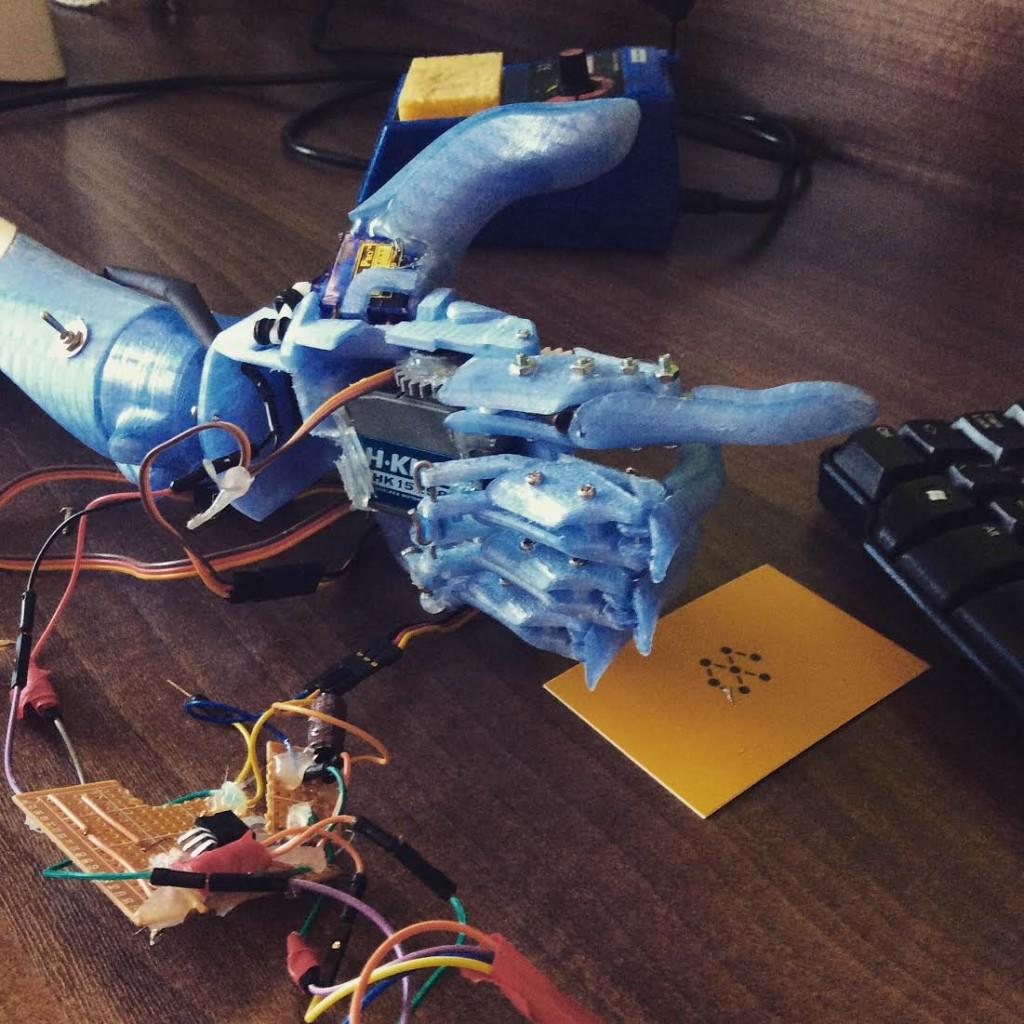 3D printed prostheses have been garnering a lot of attention as of late. Whether it is the hands and arms being created on a daily basis by volunteer groups like e-NABLE, or if it is the high tech versions being fabricated in University labs, we know one thing for sure — 3D printing will play a large role in the future creation of prostheses.
3D printed prostheses have been garnering a lot of attention as of late. Whether it is the hands and arms being created on a daily basis by volunteer groups like e-NABLE, or if it is the high tech versions being fabricated in University labs, we know one thing for sure — 3D printing will play a large role in the future creation of prostheses.
 In June, I saw Reddit user DrSpaceMann’s post on the fitness subreddit asking for workout regimes for his recent amputee brother. His brother had been involved in an accident and was scheduled for a full below-the-wrist amputation. Understandably, he wanted to continue training at the gym and asked his younger brother to find a way.
In June, I saw Reddit user DrSpaceMann’s post on the fitness subreddit asking for workout regimes for his recent amputee brother. His brother had been involved in an accident and was scheduled for a full below-the-wrist amputation. Understandably, he wanted to continue training at the gym and asked his younger brother to find a way.
I had already been in touch with the creators of an open source myoelectric prosthesis called the HACKberry — an open source 3D printable myoelectric prosthetic arm created by exiii Inc., a Japanese robotics company based in Tokyo, which specializes in arm prosthesis.
Reading DrSpaceMann’s post, I really wanted to build a HACKberry that would at least help with his brother’s day-to-day activities. The initial plan was to build a custom HACKberry, printed from materials that focus on lightness, strength and durability — and I decided on RepRapper Tech’s new aluminum-filled PLA (around 30% aluminum).
“I’m really sorry to hear that. I know you’re not looking for a prosthetic right now, but I’d love to build your brother a new hand for free. I could print it right out of aluminum,” my reply on reddit read.
Shortly after my reply to DrSpaceMann, I was contacted by a hand surgeon from Melbourne, Australia, named Neela Janakiramanan. Neela works at the unit responsible for the first successful hand transplant in Australia; her interest in prosthetics arose from direct medical experience and the realization of the limitations on what hand surgeons could actually achieve. Neela explained to me that many health interventions are founded with good intent, but ultimately fail to have a health impact because they’re not implemented systematically – or with a pre-planned assessment methodology.
I realized that with Neela’s guidance, we had the opportunity to work towards refining the HACKberry into the world’s first medical-grade open source prosthesis, something that would greatly benefit everyone.
There is such a huge scope to push the whole field forward with low cost and actually useful prosthetic upper limbs, it could really change the face of hand surgery if the problems could be ‘solved’. Thus far there hasn’t been a good enough (affordable to anyone) prosthesis to really justify solving all the ancillary issues, so that’s where the challenge will be – both to get patients to actually love and use it in the longer term, and to demonstrate that they do, and have better PROs as a consequence, so that insurers and health systems (and sometimes patients) will actually pay for the thing.

Following a few false starts from other contributors (such as Oak Ridge National Laboratory who was due to help with material research, but ultimately couldn’t for legal reasons), I built the first plastic prototype HACKberry here at Wevolver, to begin testing. The same week I finished the prototype, doctors treating Ryan decided not to remove his whole hand at the wrist and instead opted for a partial amputation. This meant the HACKberry was no longer compatible with Ryan’s injury.
Taking a leaf out of DrSpaceMann’s book, I posted the problem on Reddit and asked for help from designers and engineers in constructing a new prosthetic for Ryan. The response was overwhelming.
Reddit user, Andrew Sourk, volunteered to bring his in-depth knowledge of Carbon Fiber and Kevlar molding; Matt Miller introduced the idea of selective laser sintering; and Maxwell Emerald Perham brought his knowledge and enthusiasm of 3D design and mechanical engineering, and the list of highly qualified volunteers wanting to support the project just kept on growing.
“Size #800 Kevlar thread can hold over 200 pounds and it’s something like 1.1mm in diameter compared to 1.6mm for steel cord.” wrote Andrew Sourk.
One of our most important contributors has been BULL amputee (bilateral upper limb loss) David Worley, who has been using prosthetics for 15 years, since his own accident. David joined the team to offer support to Ryan and to provide the team with a decade and a half of experience as a prosthesis user.
The days following the Reddit update, our team of volunteers got to work sharing designs and ideas. We also decided that in addition to refining the HACKberry under Neela’s guidance, we would build Ryan a dedicated weightlifting prosthetics using Kevlar and Carbon Fiber — including a built-in digital rep counter capable of linking to Ryan’s smartphone via Bluetooth in order to record his workout performance.
David Worley pointed out the the i-limb ultra revolution, and through this we discovered the i-limb digits — a smartphone operated hand prosthesis, perfect for Ryan’s needs. The problem is the i-limb costs anywhere from $38,000 to more than $120,000 depending on the level of customization required, and Ryan would need two of them.
 After this discovery, I really felt an obligation to contribute towards making a prosthesis with the same level of quality and functionality as the i-limb and then release as PUBLIC DOMAIN.
After this discovery, I really felt an obligation to contribute towards making a prosthesis with the same level of quality and functionality as the i-limb and then release as PUBLIC DOMAIN.
Right now, we’re in the process of organising a 3D laser scan of DrSpaceMann’s brothers hands for the engineers to work from, but we’ve already been exchanging a number of designs. Our goal is not only to help DrSpaceMann’s brother, but to work together as a community towards creating the world’s first public domain medical grade myoelectric prosthesis — and who says we’ll stop there.
What do you think about this awesome creation? Discuss in the Weightlifter’s Prosthesis forum thread on 3DPB.com.
Subscribe to Our Email Newsletter
Stay up-to-date on all the latest news from the 3D printing industry and receive information and offers from third party vendors.
You May Also Like
3D Printing Financials: Fathom Struggles in Financial Quicksand During Critical Transition
Facing a year of key transitions and financial pressures, Fathom (Nasdaq: FTHM) has filed its annual report for 2023 with the U.S. Securities and Exchange Commission (SEC). The document outlines...
Latest Earnings Overview for Australian 3D Printing Firms Titomic and AML3D
Australian 3D printing manufacturing firms Titomic (ASX: TTT) and AML3D (ASX: AL3) reported their financial results for the period from July to December 2023, marking the first half of their...
3D Printing Webinar and Event Roundup: April 7, 2024
Webinars and events in the 3D printing industry are picking back up this week! Sea-Air-Space is coming to Maryland, and SAE International is sponsoring a 3D Systems webinar about 3D...
3D Printing Financials: Unpacking Farsoon and BLT’s 2023 Performance
In the Chinese 3D printing industry, two companies, Farsoon (SHA: 688433) and Bright Laser Technologies, or BLT (SHA: 688333), have recently unveiled their full-year earnings for 2023. Farsoon reported increases...

































